
I wasn’t sold on Meghalaya until a friend swore it was “nature’s best-kept secret.” She was right—it’s a Northeast gem where clouds hug the ground and the air smells like rain and pine. It’s affordable—I gorged on Jadoh for ₹60 and slept in cozy homestays for peanuts. The beauty? Unreal—think waterfalls taller than skyscrapers and rivers so clear you see fish dance. The vibe’s a mash-up of tribal soul and untouched wild—Khasi chants, Garo smiles, and Jaintia hills that whisper history. I fell for it fast, and you might too.
Top Activities and Destinations in Meghalaya

Trek to the Double-Decker Living Root Bridge in Nongriat
The Double-Decker Living Root Bridge was my Meghalaya obsession—a grueling, 3,500-step descent into Nongriat that broke my body and stitched my spirit back together. I kicked off from Tyrna village, boots tight, the air heavy with jungle breath, guided by a Khasi man named Lyngdoh who moved like the path was his pulse. The steps dropped sharp—steep, wet with moss, a relentless spiral—and I stumbled, grabbing a branch, my chuckle swallowed by the hum of insects and the drip of hidden streams weaving through the green.
We crossed wire suspension bridges—two rickety spans swaying over torrents, cables cold in my palms, the rush below thundering so loud my “oh man” vanished into it. Lyngdoh winked, “Keep going!” and I did, legs trembling, the mist from the water dusting my cheeks like a tease. Then, after an eternity—thighs screaming, sweat stinging my eyes—we hit the clearing, and there it stood: the Double-Decker, a double-layered wonder of living roots, sculpted by Khasi patience across generations. It’s alive—ropes of root thick as thighs, a bridge that grows, defying time.
I paused, panting, the creek’s murmur soft under the canopy’s dappled light, and brushed the roots—coarse, warm, humming with life—like touching history itself. A pool gleamed nearby; I plunged my feet in, gasping at the icy bite, tiny fish nipping as I grinned. Lyngdoh cracked open a guava—tart, juicy—and spun a yarn about his great-grandpa shaping this marvel, his voice blending with the breeze. It’s Meghalaya’s living soul—tough to reach, impossible to forget, a trek that carved itself into me.
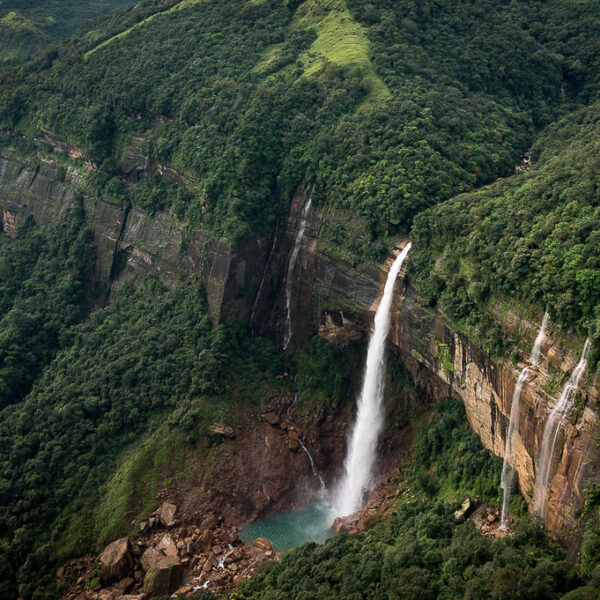
Chase Nohkalikai Falls in Cherrapunji
The Double-Decker Living Root Bridge was my Meghalaya obsession—a grueling, 3,500-step descent into Nongriat that broke my body and stitched my spirit back together. I kicked off from Tyrna village, boots tight, the air heavy with jungle breath, guided by a Khasi man named Lyngdoh who moved like the path was his pulse. The steps dropped sharp—steep, wet with moss, a relentless spiral—and I stumbled, grabbing a branch, my chuckle swallowed by the hum of insects and the drip of hidden streams weaving through the green.
We crossed wire suspension bridges—two rickety spans swaying over torrents, cables cold in my palms, the rush below thundering so loud my “oh man” vanished into it. Lyngdoh winked, “Keep going!” and I did, legs trembling, the mist from the water dusting my cheeks like a tease. Then, after an eternity—thighs screaming, sweat stinging my eyes—we hit the clearing, and there it stood: the Double-Decker, a double-layered wonder of living roots, sculpted by Khasi patience across generations. It’s alive—ropes of root thick as thighs, a bridge that grows, defying time.
I paused, panting, the creek’s murmur soft under the canopy’s dappled light, and brushed the roots—coarse, warm, humming with life—like touching history itself. A pool gleamed nearby; I plunged my feet in, gasping at the icy bite, tiny fish nipping as I grinned. Lyngdoh cracked open a guava—tart, juicy—and spun a yarn about his great-grandpa shaping this marvel, his voice blending with the breeze. It’s Meghalaya’s living soul—tough to reach, impossible to forget, a trek that carved itself into me.

Kayak the Crystal-Clear Umngot River in Dawki
Umngot River in Dawki was my jaw-drop moment—a ribbon of water so clear it felt like a trick, pebbles glinting 20 feet down like buried treasure. I rented a kayak from a shack in Dawki, the sun high, and pushed off with a guy named Prem, his paddle slicing the silence as we glided out. The river was glass—hills mirrored perfectly below, my kayak’s shadow sharp—and I trailed my hand in it, cool ripples spreading, fish darting like tiny comets under my fingers. Prem grinned, “Cleanest in India!” and I believed him, the clarity unreal.
We paddled to a quiet bend, the current gentle, and I leaned back, the splash of water on my face, the air fresh with wet earth and pine. I stayed till dusk, chasing the light—sky bleeding orange into the river, turning it into a painting I couldn’t stop staring at. My arms ached, but I didn’t care; I beached the kayak, legs wobbly, and flopped on the shore, the pebbles warm under me. Prem shared a mango—sticky, sweet—and we watched boats fade into the haze, their hum a soft goodbye. It’s Meghalaya’s liquid jewel, a place that feels like floating through a dream, and I left with a grin I couldn’t shake.

Wander Shillong’s Scotland of the East Charm
Shillong wrapped me up like a warm hug—hilly streets, colonial vibes, and a buzz that’s chill yet alive, all rolled into one. I started at Ward’s Lake, tossing bread to fish from a creaky bridge, the water rippling under a foggy sky, then wandered to Police Bazaar with a friend named Lila. The market hummed—vendors hawking bamboo mugs, the air spicy with frying momos—and I snagged one for ₹30, steaming hot, burning my tongue as Lila laughed. Shillong Peak was next—a windy climb, my scarf flapping, and a 360° view of misty hills that stopped me cold.
I stood there, the wind sharp, the city sprawling below like a toy town, feeling on top of the world. They call it the “Scotland of the East,” and I saw it—pine trees whispering, rooftops peeking through fog, a quiet that sank into me. I grabbed a coffee from a stall—₹20, bitter, perfect—and sat on a bench, the chill biting my fingers, watching clouds roll in. Lila pointed out her old school in the distance, her voice soft with memory, and I felt Shillong’s heart—old, new, and so alive. It’s Meghalaya’s cozy capital, a place that charms you slow and stays with you long.
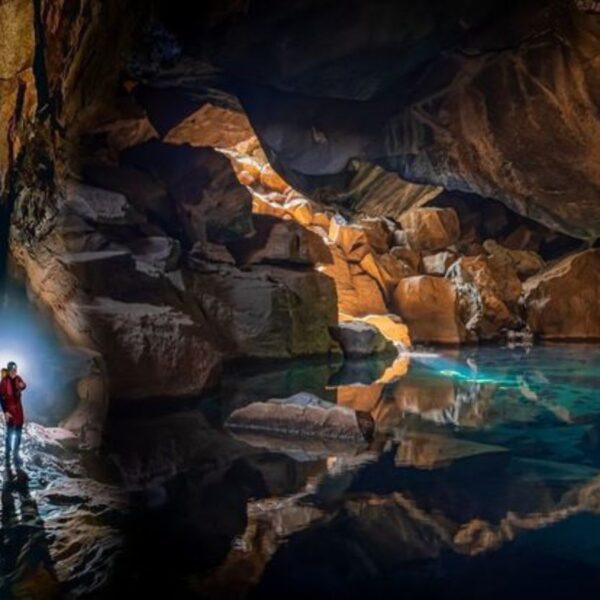
Explore Mawsmai Cave in Cherrapunji
Mawsmai Cave was my underground thrill—a limestone labyrinth in Cherrapunji that pulled me in like a dare. I ducked inside with a guide named Kynpham, the entrance tight, the air cool and damp against my skin as we stepped into darkness lit by slivers of sun. Stalactites dripped overhead like nature’s chandeliers, water echoing in the quiet, and I squeezed through a narrow bit, my shirt snagging, laughing at the echo bouncing back. Kynpham pointed out fossils—tiny shells in the rock—and I traced them, awed by time trapped in stone.
The cave twisted, the walls slick, and I felt the earth’s pulse under my boots, the stillness broken by my own “whoa.” It’s short but wild—I popped out blinking, the daylight harsh, and flopped on a rock outside, the smell of wet moss clinging to me. Kynpham brewed tea—₹15, smoky—and we sipped it, clouds rolling over Cherrapunji’s hills like a slow dance. He told me how kids dare each other to explore deeper, grinning at my wide eyes, and I felt the cave’s pull linger, a quick adventure that punched above its weight in Meghalaya’s wild lineup.
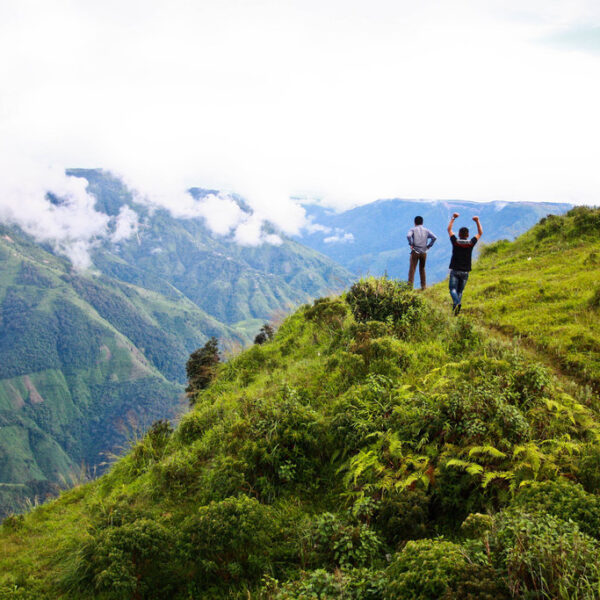
Hike Laitlum Canyons
Laitlum Canyons was my “whoa” moment—a short trek from Shillong that landed me on a cliff-edge view I couldn’t peel my eyes from. I set out early with a local named Pynshai, the path winding through scrub, the air crisp with dew and grass under my boots. We hit the edge, and my breath caught—valleys plunging below, hills stretching endless, the wind howling like it owned the place. I sat on the grass, legs dangling over the drop, clouds floating beneath me—beneath me!—and felt like I’d hacked into nature’s VIP list.
The silence was huge, broken by Pynshai’s whistle, and I watched the sunrise bleed pink over the canyons, the light warm on my face. My stomach growled; he shared a rice cake—sticky, simple—and we ate, the vastness sinking in, the wind tugging my hair. He pointed to a village below, a speck of life, and told me how shepherds roam here, their calls lost in the breeze. It’s Meghalaya’s raw edge, a hike that’s less about the walk and more about the moment—I left with a quiet high, replaying that view for days.
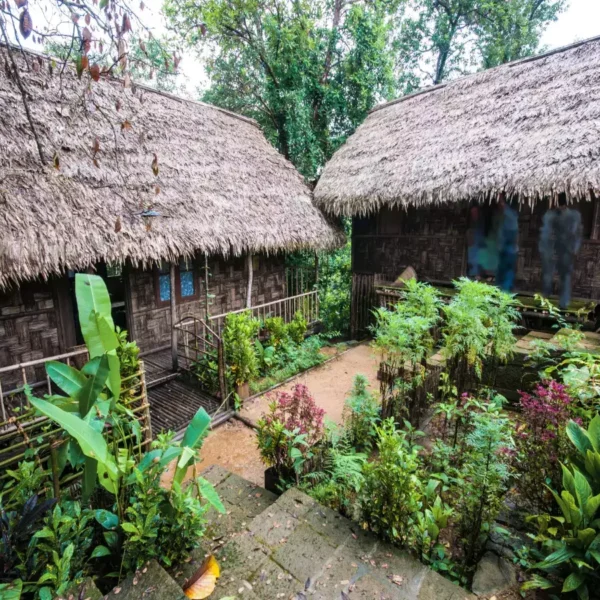
Visit Mawlynnong, Asia’s Cleanest Village
Mawlynnong blew my mind—a village so spotless it felt like a dream, tucked in Meghalaya’s green folds. I wandered its paths with a Khasi woman named Phyrnai, flower-lined huts glowing, the air sweet with blooms and bamboo. She led me up a bamboo skywalk, swaying high, the view a patchwork of roofs and jungle—I gripped the rail, my stomach flipping, and laughed as she called me “chicken.” They’ve kept it “Asia’s cleanest” since 2003, she said, her pride shining, and I saw why—no trash, just care.
We stopped by a root bridge nearby—smaller, but alive—and peeked at Bangladesh’s border, a hazy line in the distance. I sipped coconut water—₹20, fresh—its husk cool in my hands, and Phyrnai giggled about tourists dropping wrappers, her broom ready. The quiet wrapped me up, broken by kids playing, and I sat on a bench, the peace sinking in like a hug. It’s Meghalaya’s living postcard—colorful, calm, and so pure I left feeling lighter, like I’d borrowed its glow.

Soak in Elephant Falls
Elephant Falls near Shillong was my chill spot—three tiers of water tumbling over rocks, a quiet roar that pulled me in. I trekked down slippery steps with a friend named Nisha, the mist rising, my shirt damp before I hit the base. The sound grew, thundering in my ears, and I stood there, spray cooling my face, snapping pics till my phone fogged up. Nisha dared me closer—I waded in, the water icy, yelping as it soaked my jeans, and we laughed till we couldn’t breathe.
A vendor sold pineapples—₹20, juicy perfection—and I ate, the sweetness cutting the chill, perched on a rock with the falls pounding behind. The green framed it all—ferns, moss, a wet shine—and I felt the peace settle, the mist clinging to my skin. Nisha told me it’s named for an elephant-shaped rock long gone, her voice soft over the noise, and I stayed till dusk, the light fading, the roar a lullaby. It’s Meghalaya’s simple stunner—small but mighty, a soak I didn’t want to end.

Stroll by Umiam Lake
Umiam Lake was my Shillong welcome—a man-made beauty that hit me soft, hills framing water like a mirror. I walked the shore with a local named Tenzing, the wind tugging my scarf, pebbles crunching underfoot as we dodged picnickers. I rented a paddleboat—₹200, worth it—and rowed out, the splash cool on my hands, the lake glinting under a hazy sun. Tenzing steered, grinning as I flailed, and we floated, hills looming quiet, my breath syncing with the calm.
Dusk came, the sun painting the water gold, and I leaned back, the boat rocking, the air fresh with pine and wet earth. Tenzing shared a story—how it’s a dam but feels alive—and I ate a pakora from a shore stall, greasy and hot, watching the light fade. The peace sank in, the wind a whisper, and I felt Meghalaya’s gentle hello wrap around me. It’s a stroll that stays—a lake that’s more than water, a moment I didn’t rush.
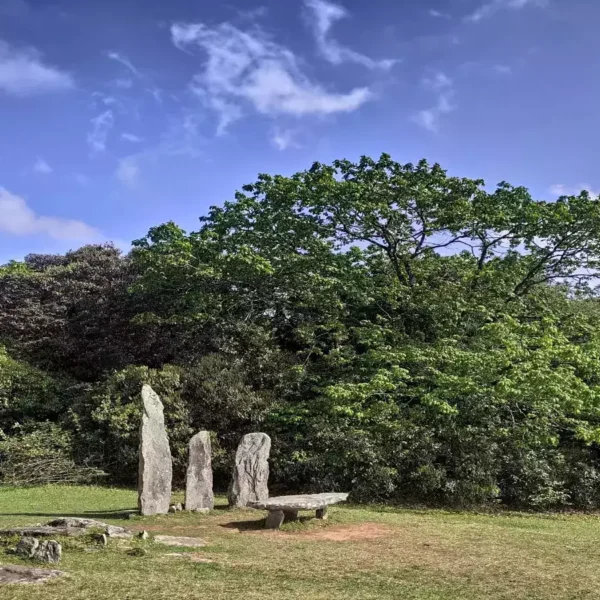
Discover Mawphlang
Mawphlang Sacred Grove felt holy—a dense forest near Shillong where time slowed and spirits seemed to linger. I tiptoed in with a Khasi guide named Synshar, leaves crunching under my boots, the air thick with moss and mystery as ancient trees loomed. He whispered tales—spirits guarding this place, no cutting allowed—and I shivered, the stillness heavy, branches creaking like they agreed. I ducked under vines, my hands brushing bark, and spotted a stone altar, worn by prayers, its quiet pulling me in.
The light was dim, filtered green, and I sat on a root, the damp soaking my jeans, the forest humming soft around me. Synshar left a leaf as thanks—tradition, he said—and I added a stone, feeling lighter, like I’d paid my dues. He told me how kids avoid it at night, his grin sly, and I felt the grove’s pulse, sacred and wild. It’s Meghalaya’s hidden soul—a grove that breathes reverence, a walk that left me hushed and whole.
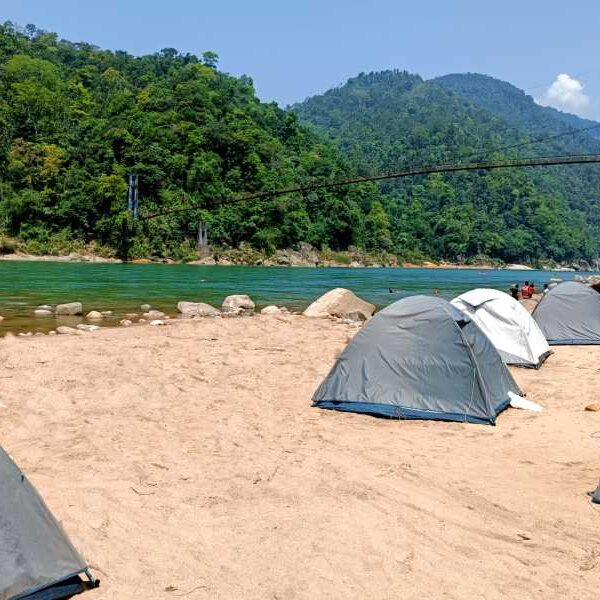
Camp in Shnongpdeng
Shnongpdeng near Dawki was my riverfront getaway—a night by the Umngot River that felt like a dream stitched from stars. I pitched a tent with a local named Daman, the water’s gentle lap a lullaby, the air cool with river mist as we built a fire. Flames crackled, I cooked Maggi—salty, steaming—and we ate, hills looming dark, the river glinting under a moon so bright it hurt. Daman hummed a tune, his voice low, and I lay back, the ground hard, the sky endless, feeling small but alive.
Morning hit with a swim—cold, clear, and so sharp I whooped, splashing till my toes pruned, fish flickering below. The sun climbed, warming my damp skin, and I sat by the tent, coffee bitter in my cup, the quiet sinking in deep. Daman shared how his family fishes here, pointing to a boat, and I felt the river’s pull, a heartbeat under the calm. It’s Meghalaya’s riverside gift—camping with paradise vibes, a night that wrapped me up and didn’t let go.



